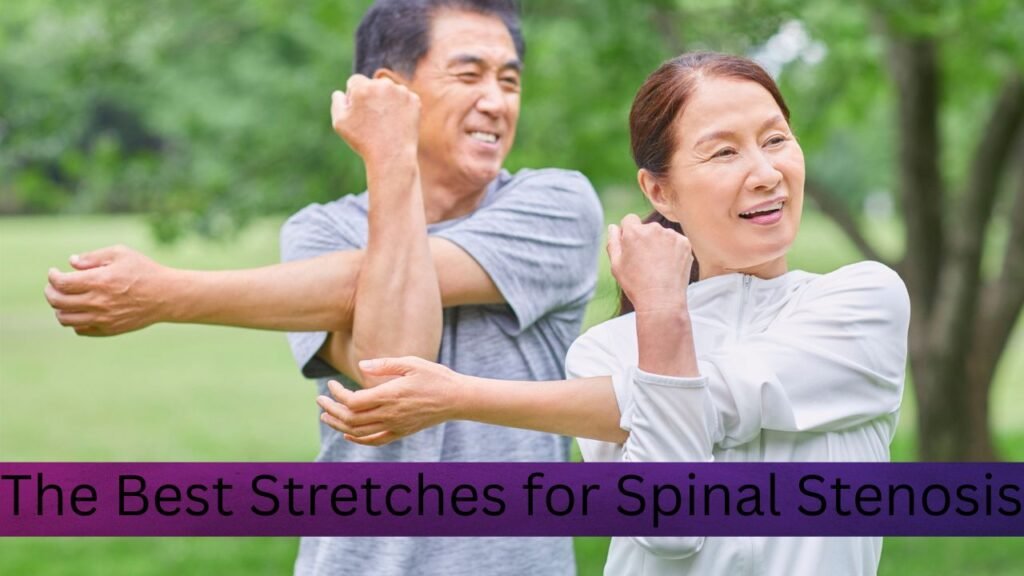Spinal stenosis is a condition where the spaces within your spine narrow, putting pressure on nerves. This can cause pain, numbness, and difficulty walking. Stretching helps relieve pressure, reduce stiffness, and improve mobility. By incorporating the right stretches, you can ease discomfort and enhance movement.

Understanding Spinal Stenosis
Spinal stenosis commonly affects the lower back (lumbar stenosis) and neck (cervical stenosis). It results from aging, arthritis, or degenerative disc disease. Symptoms include:
- Lower back or neck pain
- Numbness or tingling in the legs, arms, or hands
- Weakness and balance problems
- Pain that worsens when standing or walking
Stretching can help by opening up the spine, reducing pressure, and improving flexibility.
Benefits of Stretching for Spinal Stenosis
- Reduces Nerve Compression: Creates space in the spine, relieving pressure on nerves.
- Improves Flexibility: Loosens tight muscles that contribute to discomfort.
- Enhances Posture: Encourages better spinal alignment.
- Supports Mobility: Helps with walking and daily activities.
- Relieves Stiffness: Promotes better movement in the lower back and neck.
Best Stretches for Spinal Stenosis
1. Pelvic Tilt
This gentle movement strengthens the core and promotes spinal flexibility. How to do it:
- Lie on your back with knees bent and feet flat.
- Tighten your abdominal muscles and tilt your pelvis slightly upward.
- Hold for 5 seconds, then relax.
- Repeat 10-15 times.
2. Knee-to-Chest Stretch
Helps open up the lower back and reduce pressure on the spine. How to do it:
- Lie on your back with both legs extended.
- Bring one knee toward your chest, holding it with both hands.
- Hold for 20-30 seconds, then switch legs.
- Repeat 3 times per side.
3. Cat-Cow Stretch
Encourages spinal mobility and flexibility. How to do it:
- Start on all fours with hands under shoulders and knees under hips.
- Inhale, arch your back, and lift your chest (Cow Pose).
- Exhale, round your spine, and tuck your chin (Cat Pose).
- Repeat for 30-60 seconds.
4. Child’s Pose
Gently stretches the spine and relieves lower back pressure. How to do it:
- Kneel with big toes together and knees apart.
- Lower your chest toward the floor, extending your arms forward.
- Hold for 30 seconds while breathing deeply.
5. Seated Forward Bend (Modified)
Stretches the hamstrings and lower back without straining the spine. How to do it:
- Sit with legs extended and a slight bend in your knees.
- Lean forward from your hips, reaching toward your feet.
- Hold for 20-30 seconds.
6. Standing Hamstring Stretch
Releases tight hamstrings, which can contribute to lower back pain. How to do it:
- Stand with one foot on a low surface, keeping your leg straight.
- Lean slightly forward while keeping your back straight.
- Hold for 20-30 seconds, then switch sides.
7. Figure-4 Stretch
Targets the piriformis muscle, reducing nerve compression. How to do it:
- Lie on your back with both knees bent.
- Cross one ankle over the opposite knee.
- Hold behind your thigh and pull gently toward your chest.
- Hold for 20-30 seconds per side.
Stretches to Avoid
Some movements may worsen spinal stenosis symptoms:
- Deep Backbends: Can increase spinal pressure.
- Twisting Stretches: May irritate the nerves.
- Forward Bends with Locked Knees: Can overstretch the lower back.
Tips for Safe Stretching
- Move Slowly: Avoid sudden, jerky movements.
- Stretch Regularly: Consistency leads to better results.
- Listen to Your Body: Modify or skip painful stretches.
- Breathe Deeply: Enhances relaxation and flexibility.
When to Seek Medical Advice
If stretching increases pain, causes weakness, or leads to severe numbness, consult a healthcare provider. Seek immediate medical attention if you experience bowel or bladder dysfunction, as this may indicate a serious issue.
Final Thoughts
Stretching is a natural and effective way to relieve pain from spinal stenosis. By incorporating these gentle movements into your routine, you can reduce discomfort, improve flexibility, and support spinal health. Stay consistent for long-term relief.